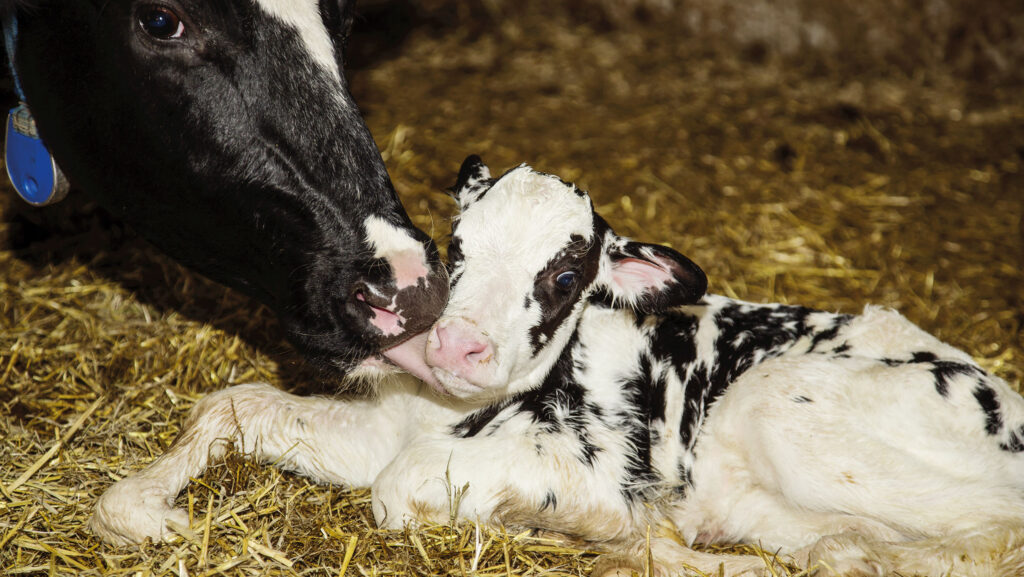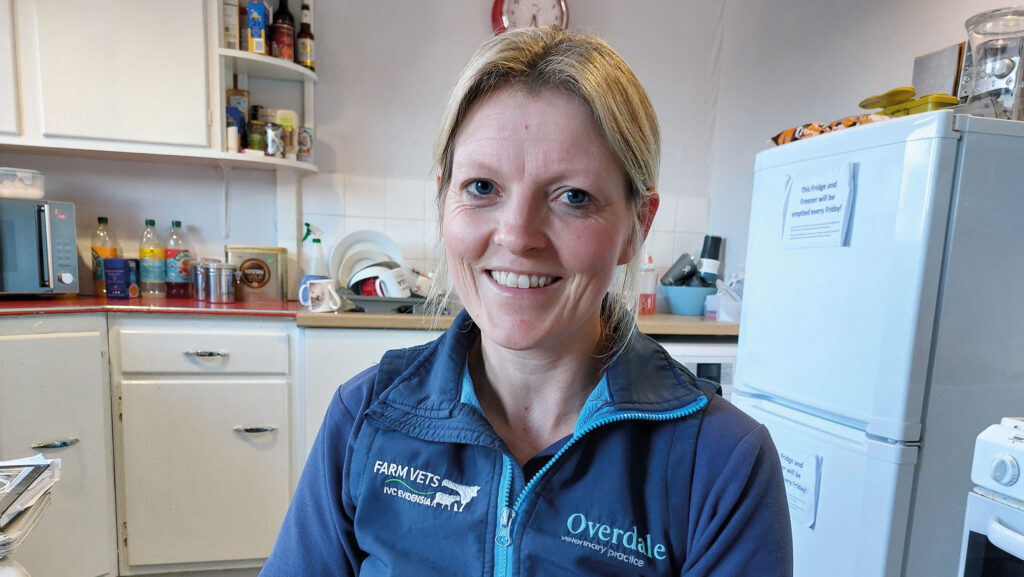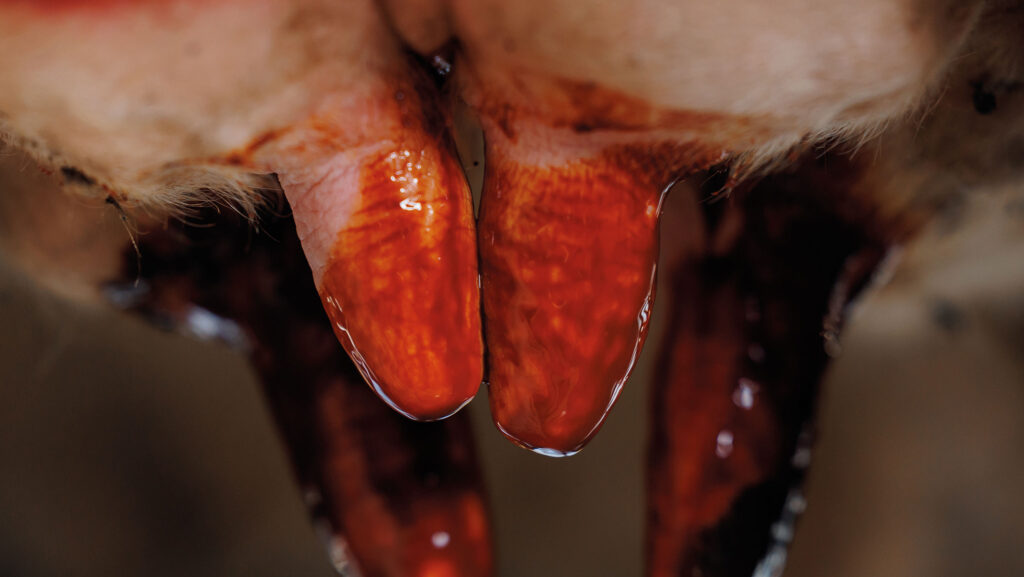Advice on E coli toxic mastitis protocols
 © Adobe Stock
© Adobe Stock Prevention is always more rewarding than cure – and usually cheaper. This is particularly so in the case of an E coli toxic mastitis where (despite early detection and treatment) the end result can be the death of a high-yielding cow.
Speed is of the essence, says vet Annemarie Fitzgerald from Derbyshire Veterinary Services in Buxton.
She is not only referring to the cow’s ability to generate a fast immune response at the first sign of an E coli infection, but also rapid treatment for when it turns into a severe case of toxic shock.
See also: Why portable milkers can ease stress at calving
Although a very common environmental pathogen, continually challenging the cow, E coli causes serious loss very quickly in those cows with a suppressed immune system.
High-yielding cows may also be more susceptible because they divert energy into milk production instead of mobilising white blood cells, says Annemarie, adding that the speed of mobilisation is also linked to trace elements such as calcium.

Annemarie Fitzgerald © MAG/Shirley Macmillan
Toxic shock risk
“Usually with an E coli infection, most cows self-cure. A few flecks spotted in the milk have gone by the next milking. In this case, an antibiotic would not be given, as the neutrophils – white blood cells – would neutralise infection before E coli releases toxin [from its cell wall],” she explains.
“But if a cow doesn’t mount a speedy response with enough white blood cells within four hours [of infection], she generates a massive immune response because blood vessels are attacked, and her body goes into toxic shock.
“Damaged blood vessels leak fluid into the subcutaneous tissue and the cow gets very dehydrated – this is the biggest killer. The cow goes cold and collapses as her circulation is failing.”
Shock causes the release of inflammatory chemicals in the body, and this produces a range of symptoms from a very hot or very cold udder, to one that is either hard or soft, she adds.
The cow is usually dead within a couple of hours. However, with early intervention from both vet and farmer, treatment protocols can save animals.
Oral rehydration
The focus is on getting plenty of fluid into the cow, using an agar pump to administer 20-30 litres of fluid into her stomach.
This contains electrolytes and calcium in warm water – usually a product given to just-calved cows, says Annemarie.
“It’s essential to get fluids in as fast as we can because the cow is in shock, and we need to get her circulation going to feed the brain and heart.
“We also give intravenous calcium, and the farmer will give an oral calcium bolus because she might have secondary milk fever.”
Vets can give the cow non-steroidal anti-inflammatory drugs (NSAIDs) intravenously (IV) for speed and effectiveness to bind the toxin.
Farm personnel can inject oxytocin to help milk let-down and then strip out the udder to remove toxin.
A broad-spectrum IV antibiotic can be given because there is a risk of a secondary infection from other bacteria as a result of the damaged blood vessels, she says.
“For 24 hours, we are pumping fluids into the cow twice a day, with antibiotics for five days, and the NSAID is repeated after three days,” says Annemarie.
A cow that is drinking and gets up is going to be alright, but unless she does this and is eating within five days, a full recovery is unlikely.
Annemarie points out that even a treatment protocol may not be enough to help at-risk cows, which include:
- Older animals – third lactation and over
- Ketosis – clinical or subclinical
- Milk fever cases
- Twins
- Thin cows – their immune system is poorer
- Fat cows – lose more weight after calving and get ketosis
- Heifers – social stress lowers immunity
- Low cell counts – below 80,000 cells/ml.
Therefore, comparing the cost-effectiveness and time spent treating a toxic E coli mastitis, Annemarie stresses that it is better to review any cases with the vet.
The first task is to establish whether it is a dry period problem, a dirty calving pen one, or related to at-risk cows.
Time, money and effort should then be spent working out a prevention strategy with both vet and nutritionist.
Every farm will have its own specific risk factors, she points out (see “Risk factors for toxic E coli mastitis”).

© Adobe Stock
Vaccination
Vaccination for E coli is now possible, with two products on the market. But apart from the cost – and one product needs to be injected three times a year, every year – Annemarie stresses that vaccination will not cure or prevent E coli infection.
“Vaccination just makes the signs less severe,” she says.
Instead, it is better to maintain all other vaccinations on the health plan to fix any underlying health problems that might be affecting the cow’s immune system, such as bovine viral diarrhoea, infectious bovine rhinotracheitis, or Mycobacterium bovis.
Risk factors for toxic E coli mastitis
Diets
- Ketosis – vets can blood-test cows 5-21 days post-calving to detect subclinical or clinical; results reveal whether the transition diet has worked and a cow has not mobilised excess body fat
- Cows not mobilising calcium fast enough at calving may hold onto cleansing, making them more prone to infection and milk fever, and leading to secondary E coli infection
- Blood-sample dry cows two weeks before calving to test magnesium levels – discuss supplementation with the nutritionist
Mastitis prevention
- Culture mastitis cases to establish which bacteria are present on-farm to give an idea of mastitis patterns
- Use a teat sealant as well as an antibiotics tube to give full protection for the whole dry period if there is concern about a gap in cover before calving. Accurate pregnancy diagnosis will determine the correct dry period length
- Keep cows standing for 30 minutes after calving until the teat-end closes to prevent bacteria entry
- Dry cow therapy – ensure aseptic techniques to avoid infusing the udder with E coli
- Group cows for drying off at the end of milking to reduce risk of cross-contamination
- Good parlour maintenance, changing liners and good teat disinfection help reduce teat-end damage
Calving
- Calving pens – clean out after every calving, rest pens if possible and lime twice daily
- Calving paddocks – no more than two weeks in one paddock; rest for four weeks. Watch out for cows camping in poached, dirty areas such as gateways and under trees
Stress
- Create a separate fresh-calver management group for early lactation to reduce stress levels and allow more focus on vulnerable cows
- At calving, milk a cow with a portable machine so that she does not have to walk to the parlour and risk falling over
- Minimise group changes and always move cows into groups with friends
Housing
- Ideally, run 10% more cubicles
- Make sure cubicles are well-maintained – broken mattresses can harbour E coli
- Poor ventilation and poor humidity favour E coli – use a smoke bomb to check shed ventilation
- Scrape cubicle passages twice a day
- Offer enough lying space to dry cows
- Provide sufficient feed space and water
Source: Annemarie Fitzgerald, vet with Derbyshire Veterinary Services, Buxton
